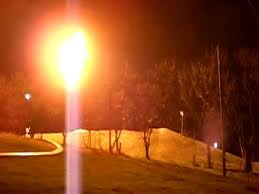By Pam Kasey,
State Journal,
August 16, 2012
The article below has been drawn from that published in the State Journal by Pam Kasey.
Natural gas producers will be required to flare or capture emissions that return to the surface with hydraulic fracturing flowback beginning October 15, based on the August 16 publication in the Federal Register of new U. S. Environmental Protection Agency air pollution rules for the oil and gas industry.
The New Source Performance Standards and National Emission Standards for Hazardous Air Pollutants, aimed at improving air quality and reducing health risks, were finalized on April 17 but not officially published until today.
“The action taken today is expected to yield nearly a 95 percent reduction in smog-forming volatile organic compounds emitted from more than 13,000 hydraulically fractured gas wells each year,” said EPA Office of Air and Radiation Assistant Administrator Gina McCarthy on releasing the rules in April. It also will protect health by reducing smog and by reducing emissions of hazardous air pollutants such as benzene, which can cause cancer.
Among the rule’s requirements, operators are required to use “reduced emissions” or “green well completion” equipment to capture gas and condensate that comes up with hydraulic fracturing flowback, preventing their release into the air and making the valuable hydrocarbons available to the producer for sale.
During a transition period that ends January 1, 2015, they will have the option to flare instead.
The agency asserts that, by capturing a valuable resource rather than wasting it, green completion technology will pay for itself in about 60 days. It estimates savings to the industry of $11 to $19 million when the rule is effective in full in 2015 and every year thereafter.
The oil and gas industry is responsible by some estimates for about 40 percent of U.S. emissions of methane, a powerful greenhouse gas, although the industry believes emissions estimates are too high.
Although the targets of the rule are VOCs and hazardous air pollutants, methane is captured through this technology as well and McCarthy said in April that the agency does not see a need to take further action on industry methane emissions.
The rules may be read in the Federal Register; the final rule, an overview and other resources may be found on the EPA’s oil and natural gas air pollution standards web page.


{ 4 comments… read them below or add one }
I would think that anytime youre producing gas that is not on line for production or being stored in some form you would flare it for safety. Gas is heavier than air so when drilling we would be on B.O.P alert when there was any chance of making gas. If we did start making gas we would flare it to prevent explosions. This could change depending on whether we drilled on fluid or air. The majority of the time drilling fluid will supress the gas based on pound per gallon methods. My point is that flares have been common more for safety as much as for enviormental protection.
Randal. Actually the methane in natural gas, the major component is lighter than air, because methane has a molecular weight of 16 verses 29 for air. All the other constituents of natural gas including ethane, propane, benzene, etc, are all heavier than air. We are talking about density here, which is proportional to the Molecular Weight.
I see, thanks for breakdown.
You really make it seem so easy with your presentation but I find this matter to be really something which I would never
understand. It seems too complicated and extremely broad for me.
I’m looking forward for your next post, I’ll try to get the hang of it!